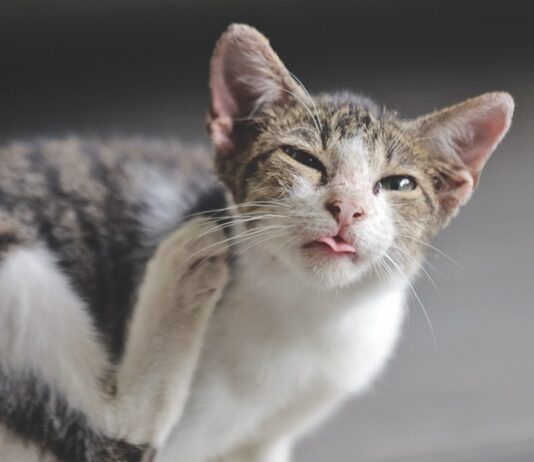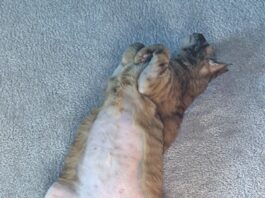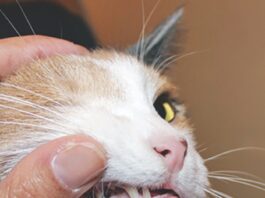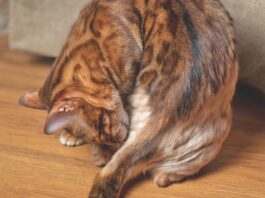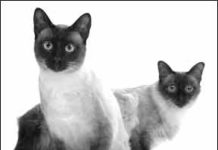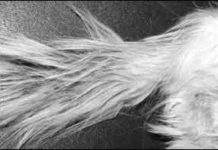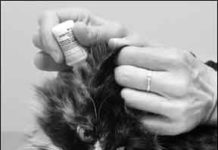The Year-Round Threat of Ticks
Ticks pose a year-round threat to cats in every state — even if yours spends virtually all his time indoors. These minute arachnids have survived for millennia and often go undetected as they feed on their host’s blood, often causing serious illness and even death. “The major problem with ticks is that they are vectors for various infectious agents,” says dermatologist William H. Miller, VMD, at the Cornell University College of Veterinary Medicine.
The Many Roles of Whiskers
The old-fashioned term “the cat’s whiskers” means the height of perfection. It was popular in the ’20s, along with “the cat’s meow.” Debate ensued regarding the origin of the phrases, but people who used them certainly understood the unique capabilities of your cat’s most sensitive hairs.
Ask Elizabeth: June 2013
First of all, I want to thank and congratulate you for the obvious care that you have provided and concern you have for your baby. Given his age, you have clearly done something (many things!) right, and today’s question is an extension of the dedication that you have shown.
‘An Itchy Cat Feels Miserable’
Fortunately for cats, parasitic mites are more likely to feast on dogs, but felines aren’t home free. Affected cats can appear moth-eaten, missing patches of fur on the head, neck and ears, but mange is more than unsightly. “An itchy cat feels miserable,” says dermatologist William H. Miller, VMD, Medical Director of Cornell University Hospital for Animals. “Itchy cats often get grumpy and hide frequently, lose their appetites, and sleep a lot when they aren’t itching.” What’s more, mites can cause skin conditions ranging from dandruff to infected sores.
An Itchy Cat Feels Miserable
Fortunately for cats, parasitic mites are more likely to feast on dogs, but felines aren’t home free. Affected cats can appear moth-eaten, missing patches of fur on the head, neck and ears, but mange is more than unsightly. “An itchy cat feels miserable,” says dermatologist William H. Miller, VMD, Medical Director of Cornell University Hospital for Animals. “Itchy cats often get grumpy and hide frequently, lose their appetites, and sleep a lot when they aren’t itching.” What’s more, mites can cause skin conditions ranging from dandruff to infected sores.
Enhance His Coat, Improve His Health
A cat’s coat is his glory. Whether it’s soft, thick fur, long flowing hair or the suede-like skin of a hairless breed, the coat is more than an adornment. “The skin and hair buffer the animal from his environment — heat, cold, sun, wind — and make it more difficult for the skin to get infected,” says dermatologist William H. Miller, Jr., VMD, Medical Director of Cornell University’s Animal Hospital. “A dull, dry and unkempt coat doesn’t offer as much protection as a healthy one.” The message is inescapable: Enhance the coat and you enhance your cat’s well-being. The two most important elements to consider are diet and grooming.
You Can Prevent This Serious Disease
If you’ve resisted brushing your cat’s teeth, knowing how strenuously he’s likely to object, consider this: Periodontal disease, an often painful inflammation of the gums that can result in bone loss and destruction of oral tissue, is extremely common. In fact, it’s the most prevalent disease in companion animals and can pose serious health threats. “Periodontitis has been shown to play a role in such health problems as cardiovascular disease and diabetes,” says dental specialist Santiago Peralta, DVM, a Lecturer in Dentistry and Oral Surgery at the Cornell University College of Veterinary Medicine. This disease is, however, entirely preventable, according to the American Veterinary Dental College (AVDC). The best way to prevent periodontitis is by regular brushing and professional dental care.
Supracaudal Gland Hyperplasia
In teenagers, the sebaceous glands contribute to the development of acne. In cats, these glands can cause a similar problem at the base of the tail, an accumulation of scale (flakes) and yellow-to-black waxy debris (blackheads) along the dorsal, or top, surface of the tail. Although it can affect any cat who doesn’t groom the tail, the condition was once thought to affect only intact male cats, hence the name stud tail, says dermatologist William H. Miller, Jr., VMD, Medical Director of the Cornell University Hospital for Animals.Medically, the condition is known as supracaudal gland hyperplasia or tail gland hyperplasia. It’s caused by hypersecretion of the glands in the supracaudal organ on the base of the tail.
Is it Normal Shedding or Hair Loss?
With the exception of hairless breeds such as the Sphynx, cats are known for their furry pelts, so if a cat starts to lose his coat, it’s justifiably cause for concern. How can you distinguish between normal shedding and abnormal hair loss? It’s easy: Shedding doesn’t cause bald spots. If the skin is visible, best to schedule a veterinarian exam or ask for a referral to a dermatologist. Hair loss, or alopecia, takes two main forms, says dermatologist William H. Miller, VMD, Medical Director of the Companion Animal Hospital at Cornell University College of Veterinary Medicine: “The hairs fall out spontaneously.” Though it’s a rare occurrence, spontaneous hair loss can be related to stress, endocrine diseases such as Cushing’s disease (an overproduction of cortisol by the adrenal glands), hyperthyroidism (excess production of the thyroid hormones), and some forms of cancer, including lymphoma, liver or pancreatic cancer.
Your Cat’s Hearing: Is It Failing?
Among all acquired feline ear disorders, the most common by far is otitis externa, an infection of the outer ear canal that, if left untreated, can progress to the inner ear, damage the ear drum and seriously compromise an animal’s hearing as well as its sense of balance. The most common cause of this unpleasant condition and its potentially deafening consequences is an assault on the ear by an outside invader, the ear mite. In some cases, however, the culprit is an organism that normally resides harmlessly within a cat’s ear — a one-celled fungus, or yeast, known as Malessezia.
Short Takes: June 2012
Owners often bring their cats to the veterinarian due to a bout of constipation, which can have a variety of causes. Veterinary treatment includes determining and eliminating the cause, if possible, along with medical and sometimes surgical management. Medical therapy often includes the use of laxatives, enemas and prokinetic agents (like cisapride). Psyllium is a soluble fiber that produces a mucilaginous gel that helps to increase fecal bulk. It also adds to stool bulk by other water-holding properties. Psyllium has been found to increase stool frequency and consistency in humans with idiopathic constipation.
Your Cats Hearing: Is It Failing?
Among all acquired feline ear disorders, the most common by far is otitis externa, an infection of the outer ear canal that, if left untreated, can progress to the inner ear, damage the ear drum and seriously compromise an animal’s hearing as well as its sense of balance. The most common cause of this unpleasant condition and its potentially deafening consequences is an assault on the ear by an outside invader, the ear mite. In some cases, however, the culprit is an organism that normally resides harmlessly within a cat’s ear — a one-celled fungus, or yeast, known as Malessezia.

